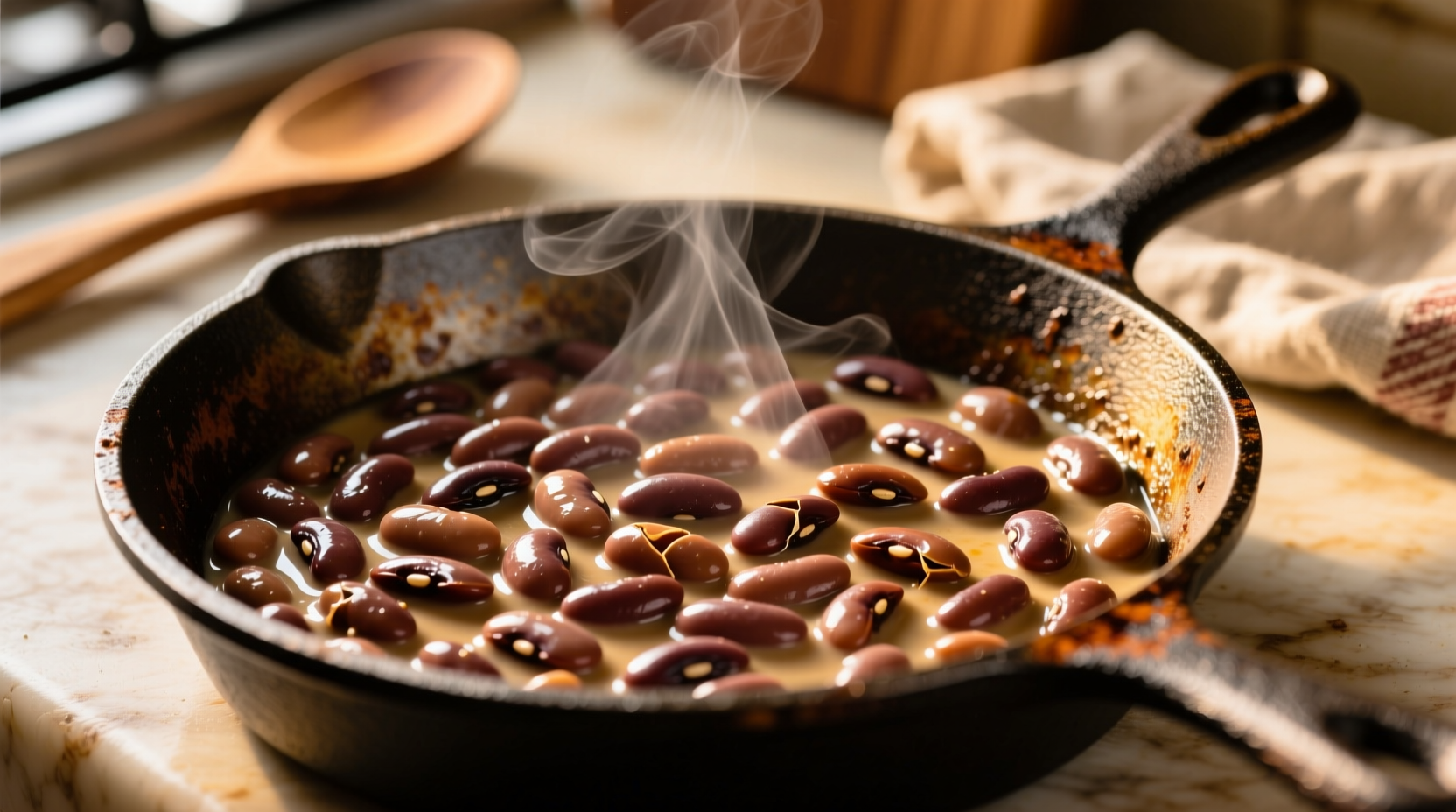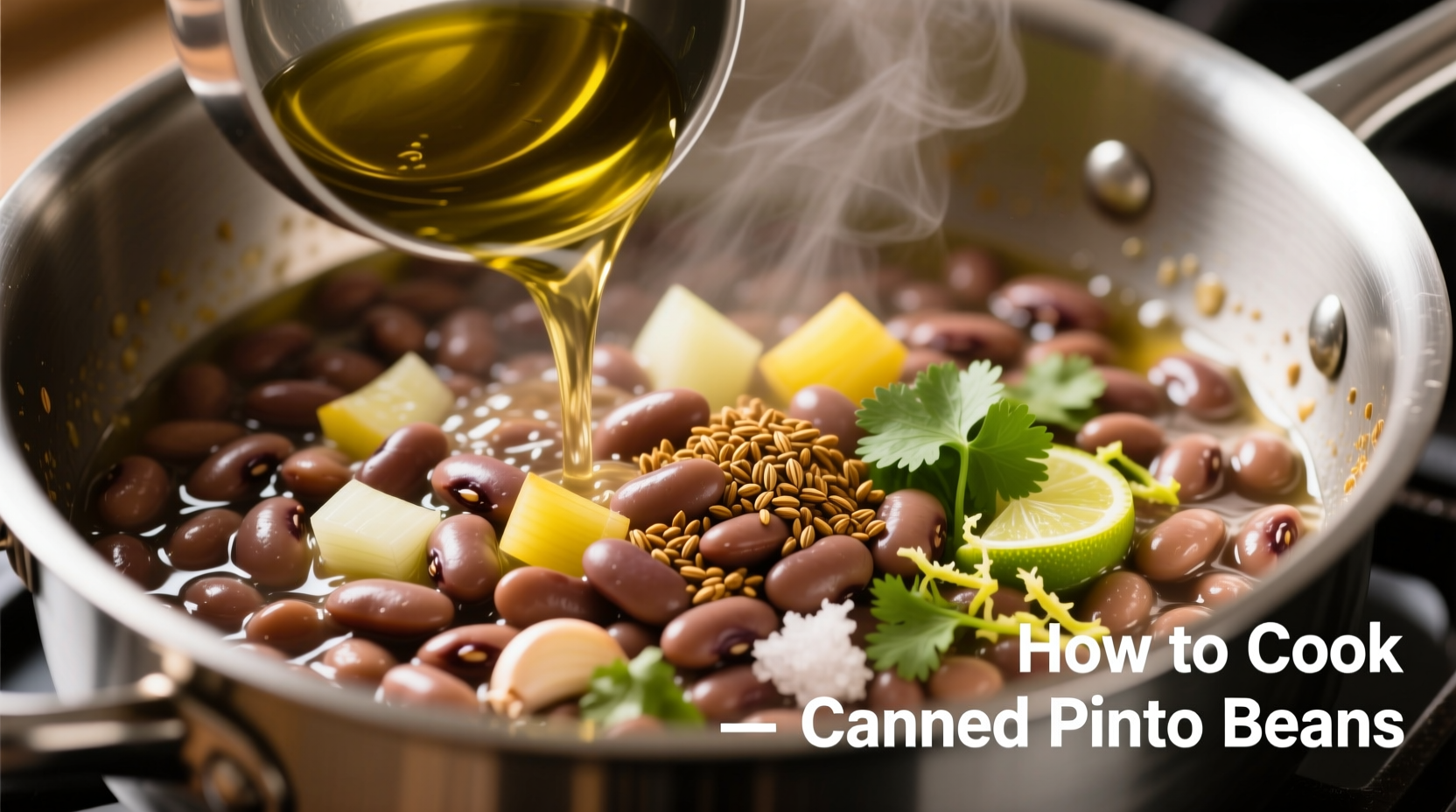Stop serving flat, uninspired canned pinto beans! With these chef-tested techniques, you'll create restaurant-quality results in the time it takes to cook rice. Most home cooks simply dump and heat canned beans, missing critical flavor-building steps that transform this pantry staple into a standout side dish or meal foundation.
Why Your Canned Pinto Beans Taste Bland (And How to Fix It)
Canned pinto beans come pre-cooked in salty water that leaches flavor during processing. The secret to exceptional beans lies in proper preparation—not just reheating. Professional kitchens never serve canned beans straight from the can. Instead, they treat them as a blank canvas requiring strategic flavor development.
Essential Preparation: The 3-Step Foundation
1. Proper Draining and Rinsing Technique
Place beans in a fine-mesh strainer and rinse under cold running water for 30-60 seconds, gently agitating with your fingers. This removes excess sodium (up to 40% according to USDA Food Safety guidelines) and the starchy liquid that causes digestive discomfort.
2. Flavor Base Development
"The flavor foundation makes all the difference," explains Maya Gonzalez, Latin American cuisine specialist. "Sauté aromatics like onions, garlic, and bell peppers in olive oil until translucent before adding beans. This builds complexity that simply seasoning the beans themselves cannot achieve."

3. Strategic Seasoning Layering
Add seasonings in stages for maximum impact:
- Early stage: Bay leaves, dried herbs (cumin, oregano)
- Middle stage: Liquid components (broth, tomatoes)
- Finishing stage: Acid (vinegar, lime juice), fresh herbs
Professional Flavor Variations
| Flavor Profile | Key Ingredients | Cooking Notes |
|---|---|---|
| Southwest Style | Chili powder, cumin, smoked paprika, diced green chilies | Add 1 tsp chipotle powder for authentic smokiness |
| Mexican Street Style | Lime juice, cilantro, epazote, Mexican oregano | Add epazote during simmering for traditional flavor |
| Texan Simmer | Onion, garlic, bacon drippings, jalapeño | Use reserved bacon for garnish after cooking |
Critical Timing Guidelines
Overcooking canned beans destroys their ideal creamy-yet-firm texture. Follow this timeline:
- 0-3 minutes: Sauté aromatics until translucent
- 3-5 minutes: Add beans and liquid (use broth instead of water)
- 5-12 minutes: Simmer gently to meld flavors
- 12 minutes: Remove from heat and add finishing touches
The National Center for Home Food Preservation confirms that canned beans only require reheating to serving temperature, not extended cooking. Extended simmering beyond 15 minutes causes beans to become mushy and lose nutritional value.
Common Mistakes to Avoid
- Adding salt too early: Wait until beans are nearly done to prevent toughening
- Using only the can liquid: This contains excess sodium and starch
- Skipping acid at the end: A splash of vinegar or citrus brightens flavors
- Overcooking: Canned beans only need 10-12 minutes of gentle simmering
Food Safety Essentials
Always heat canned beans to an internal temperature of 165°F (74°C) as recommended by the USDA Food Safety and Inspection Service. Never leave cooked beans at room temperature for more than 2 hours. Store leftovers in airtight containers within 2 hours of cooking.
Serving Suggestions
Perfectly cooked pinto beans shine in these applications:
- As a side with grilled meats or roasted vegetables
- As a filling for burritos, tacos, or quesadillas
- Mashed with avocado for healthy bean dip
- Added to soups and stews for extra protein
Storage Guidelines
Properly stored cooked pinto beans maintain quality for:
- Refrigeration: 4-5 days in airtight containers
- Freezing: Up to 6 months (freeze in portion-sized containers)
When reheating, add a splash of liquid to restore moisture. The University of Nebraska Extension recommends thawing frozen beans in the refrigerator overnight rather than at room temperature for optimal food safety.











 浙公网安备
33010002000092号
浙公网安备
33010002000092号 浙B2-20120091-4
浙B2-20120091-4